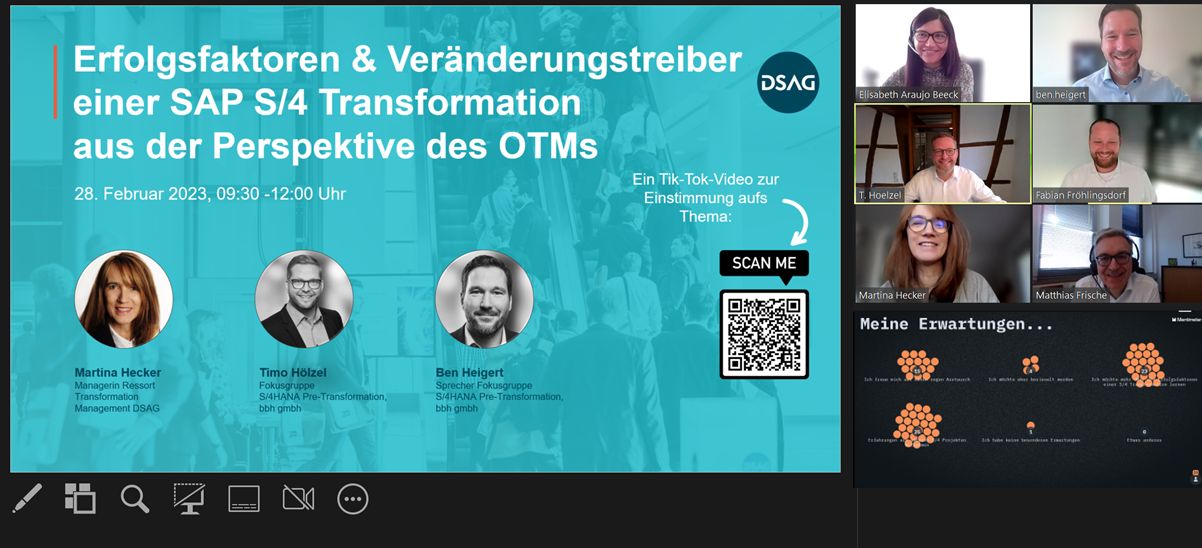Avoid transformation killers –
part 3 of our blog series

In this part of our blog series, I would like to draw attention to three change killers that, in our experience, still too often cause transformation projects to fail: no convincing storyline, disagreement in top management, and underestimation of the middle management’s role.
Change Killer #1:
Hesitation – as a clear storyline is missing
Change is one of the most difficult tasks for many people. If, on top of that, the reasons and the goal to be achieved seem unconvincing, you will hardly be able to motivate the employees to face up to an uncomfortable change. A consistent storyline with clear messages giving people confidence, courage and trust is therefore absolutely essential. Ideally, you have answers to the following questions:

HOW the communication is designed must show that “our C-level’ knows what they are doing. But at the same time, this should happen in a trustworthy, empathic manner. This also includes to openly and honestly speak about the topics that have not yet been fully clarified and about challenging issues that are still pending. Too often, these sensitive topics are hidden behind management phrases fueling distrust among the employees.
In an upcoming blog article, our communications expert Volker Glock will give further impulses on what to pay attention to when it comes to communication in transformations.
Change-Killer #2:
Disagreement and dissension in top management
A frequently addressed issues, not only in transformation processes: Different, sometimes even contradictory statements about the goals, focus and effects of the change process coming from different stakeholders. Or people get the impression that the change “only affects sales”, or that “nothing was finally discussed or is fully defined yet”. In most cases, this is the consquence of top management’s disagreement or dissension regarding reasons-why, targets and scope considering the whole company. And if the VP comments on the project in his own way – often behind closed doors – or even talks it down, it will be really hard for a department head to ensure the necessary attention, urgency and acceptance within his or her team. That is why it’s crucial to establish a joint understanding with regard to:

Surprisingly, there is often a lack of common understanding of the initial situation…
Recently, we’ve come across the following statement in a discussion with a customer: “We don’t need any further analysis, we know where we currently stand. We’ve done enough employee and customer surveys for that.” From a purely analytical, rational view, this may even be true in most cases. However, when it comes to social and emotional aspects, it is in these cases where “no further analysis is necessary” that very controversial perceptions often prevail. This relates in particular to deeply embedded beliefs about who is responsible for the current status quo – i.e., the usual question, “Who’s to blame that things aren’t working well at the moment?” But: What exactly is not working smoothly? Often, the aspect of starting with a “common awareness of the status quo” is only addressed superficially and/or exclusively factually, with the intention of achieving unity as quickly as possible and being able to look ahead. However, this leads to the fact that the change process stands on a very shaky foundation. Even if there is a great deal of agreement on the objectives. If you only establish a “lowest common denominator” with regard to the perception of the initial situation, it very quickly becomes very difficult in the joint implementation of changes. And the next levels in the organization will notice this immediately.
Change Killer #3:
Underestimation of middle management’s impact and needs
The sphere of influence of top management and the project team is limited. When it comes to implementation and anchoring of changes in day-to-day life this is handed over to the responsibility of middle managers or other key players in the decentralized organization. Often, these managers are then in an unpleasant, nasty situation. To some extent, they are themselves unsecure and don’t know how their own role may change, without having direct influence on central decisions. Yet they occupy an incredibly important role because they are closest to the people in their department and are expected to shape the transformation in their area of responsibility. Therefore, while it is important to make key players aware of their role and what is expected of them, it is even more important to also offer them pragmatic support that is valuable for them in their individual situation. For example through:

You can find out what this support can look like in concrete terms in the next article by Timo Hölzel, which focuses on the role of managers as multipliers.

CV snippets
- Studies in biology, University Würzburg, doctorate in biotechnology
- Intellectual Property Consultant
- Since 2000 consultant at BBH
What makes BBH so special in my view
International companies, challenging projects, concrete solutions for our customers and a team that works absolutely professionally.






